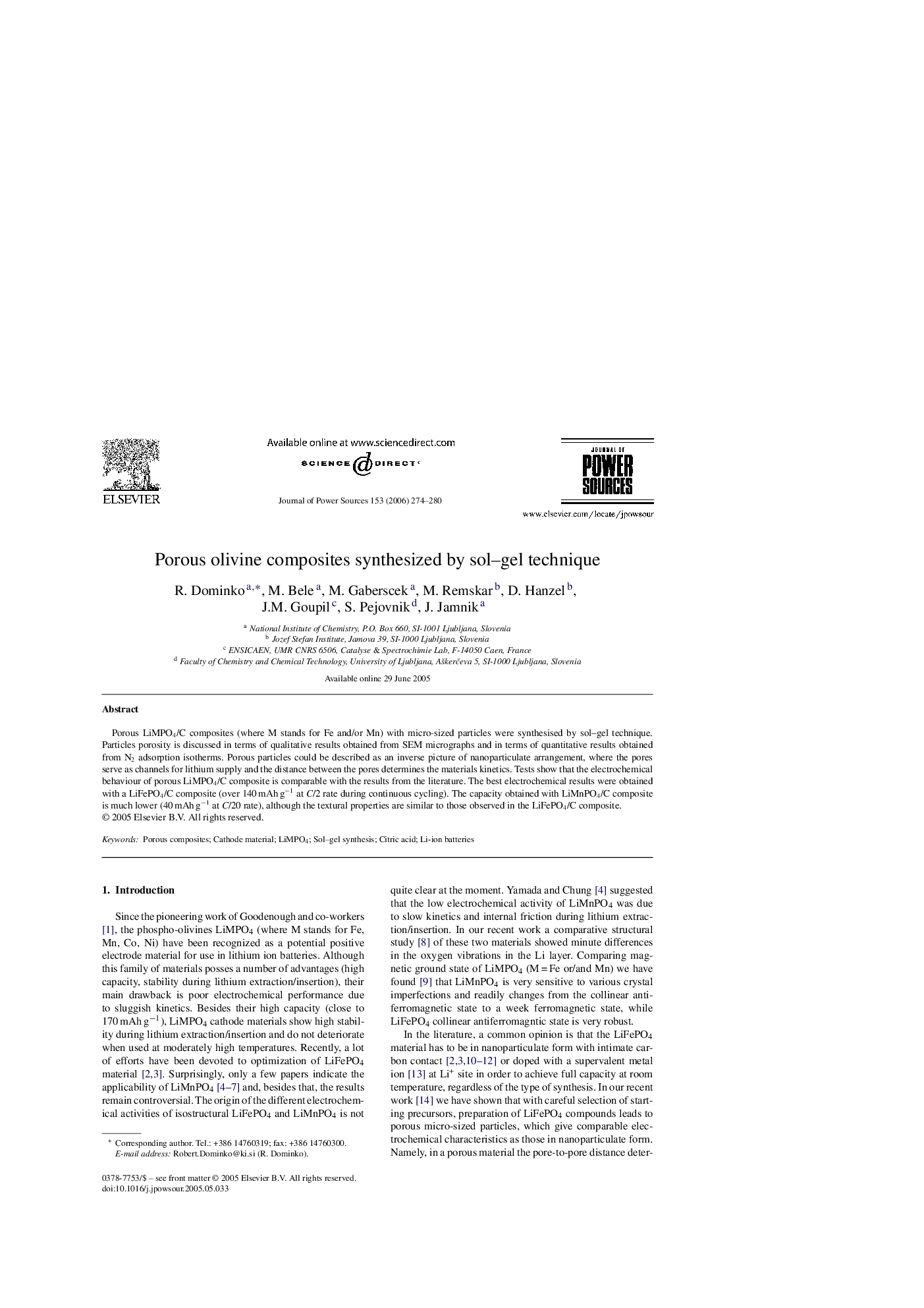| Article ID | Journal | Published Year | Pages | File Type |
|---|---|---|---|---|
| 1295194 | Journal of Power Sources | 2006 | 7 Pages |
Porous LiMPO4/C composites (where M stands for Fe and/or Mn) with micro-sized particles were synthesised by sol–gel technique. Particles porosity is discussed in terms of qualitative results obtained from SEM micrographs and in terms of quantitative results obtained from N2 adsorption isotherms. Porous particles could be described as an inverse picture of nanoparticulate arrangement, where the pores serve as channels for lithium supply and the distance between the pores determines the materials kinetics. Tests show that the electrochemical behaviour of porous LiMPO4/C composite is comparable with the results from the literature. The best electrochemical results were obtained with a LiFePO4/C composite (over 140 mAh g−1 at C/2 rate during continuous cycling). The capacity obtained with LiMnPO4/C composite is much lower (40 mAh g−1 at C/20 rate), although the textural properties are similar to those observed in the LiFePO4/C composite.
